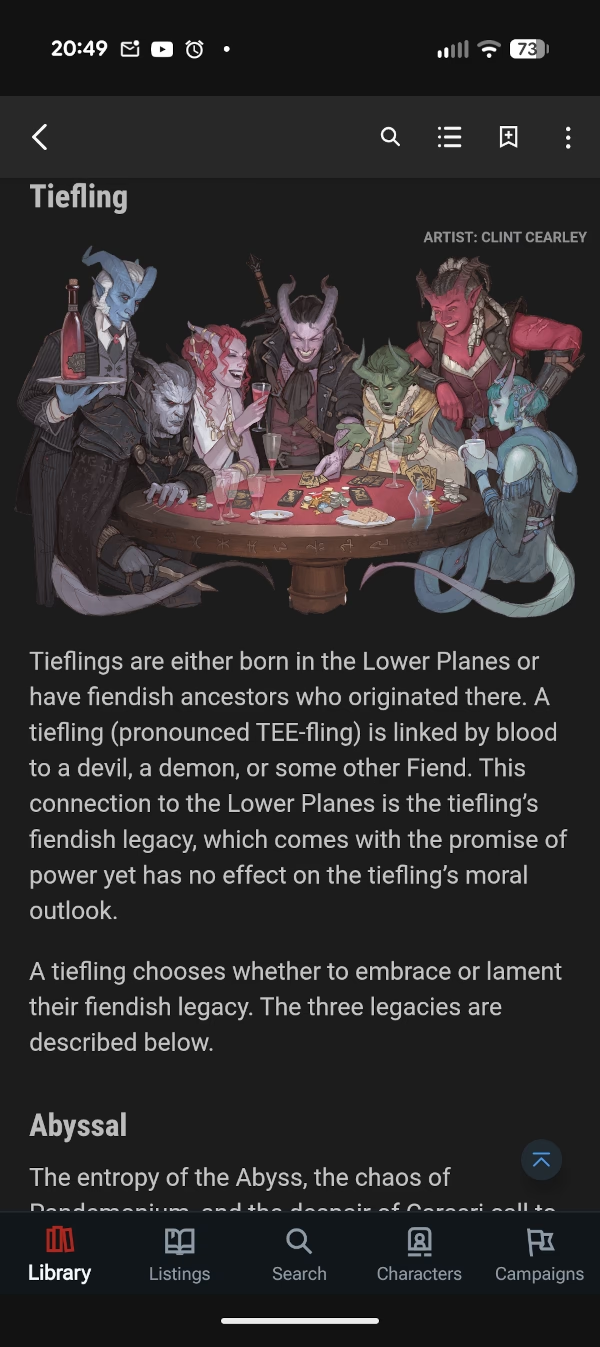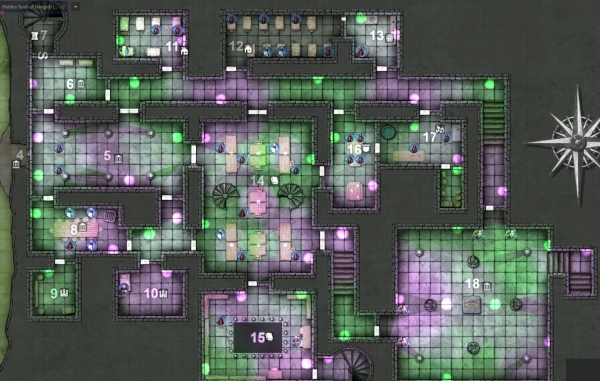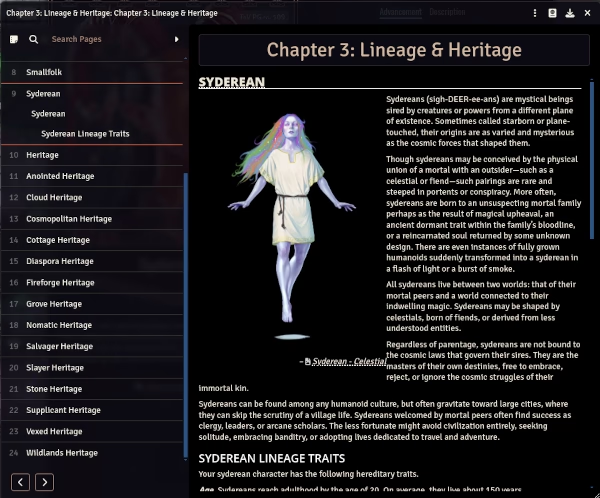Updated Thoughts on TTRPG Sourcebooks
EricMesa
- 9 minutes read - 1837 wordsA while ago I wrote about the need to spend money for each publishing type of a TTRPG “book”. My opinion at the time was that the PDFs should come for free with the physical books and I was annoyed, but somewhat understanding of the need to charge extra for a VTT version of the book. My thoughts have evolved somewhat, so I wanted to write an updated post on the different ways a book could be published and what I thought about it.
Physical Books
Physical books continue to be the gold standard for me. Even though I prefer ebooks for my literature books, nothing beats a physical book for TTRPGs. The artwork really pops in a physical book. It’s easier to flip around to certain sections if you know roughly where it is in the book. Our minds are meant to deal with physical objects and you can gain a better feeling for where you are in the book in relation to other sections of the book.
The negatives are pretty obvious and easy to point out. They cost more because they require physical paper, binding, etc and they must be shipped. If I want to read my books during a traveling vacation they are heavy and take up space in my luggage compared to a digital version. They can’t be backed up to the cloud in case of fire or burglary. I can’t read them while in line at the grocery store or doctor’s waiting room (unless I’m lugging them everywhere I go)
Pricing is going up because the prices of physical goods and getting things printed is going up. I think if you compare the price of the core books over the life of a system (10ish years for D&D and Pathfinder) vs other hobbies - going to movies, buying video games, etc - it still remains cheap overall. It’s typically even cheaper if you’re a player and not a GM/DM (who is usually the person who buys all the books) On the plus side, both Paizo and Kobold Press also sell “pocket” versions of their books for about half the price of the normal size book.

My TTRPG Bookshelf
PDFs
PDFs provide an in between level of benefits. Unlike physical books, if you put them into dropbox or Google drive you can have them anywhere you have a computer or phone. They provide the same layout as the book and also add in searching. While a book is better if you have a rough idea where you think some information is, a PDF is way better if you need to search for a specific term. Also, a well-made PDF has good links like a well-designed website. Also (and I wish more companies did this) it’s near zero cost to add errata to a PDF and send that back out to customers compared to the cost of reprinting a book.
The negatives to a PDF aren’t HUGE, but they do exist. First of all, because they don’t reflow like an ePub (the whole point is the be the exact layout of the book), it can be annoying to read a PDF if you’re not using a device of the right size. A phone requires zooming and scrolling in every direction. A nice monitor in the usual landscape orientation is great for companies that have 2-page spreads, but usually means scrolling up and down. Alternatively, if you’re a programmer, you might have a vertical monitor you can use at the expense of 2-page spreads. Obviously, you need to have access to electricity.
When it comes to pricing, I have come around to the idea that it DOES cost extra money to do good linking. (Since the PDF apes the book layout, my previous argument was that there wasn’t really extra work to justify the cost) Some smaller publishers do provide a free PDF with any physical purchase. Paizo gives you the PDF free if you do a subscription for book delivery. Kobold Press generally gives you a discount on the PDF, but only if you buy it directly from them. If I could change anything it would be for everyone (including Wizards of the Coast and Kobold Press) to at least include a discount code for a PDF if I buy the book at my local game shop or Amazon. Right now I can either support local game shops (which everyone is always saying to do) or I can buy directly from Kobold Press or Paizo and get a deal on the PDF.

My TTRPG PDFs are organized by system
Nexus/DnDBeyond
Both of these services provide web/app optimized versions of the books. DnD Beyond is, naturally, for D&D content while Nexus aims to provide content for everyone else. The biggest benefit of these services is that they solve the content-reflow issue. Whether I am reading on my phone or on my computer, the text spreads out from left to right in such a way that I just have to scroll up and down. Usually these sites or apps allow you to adjust the font to whatever size works for your eyes. This makes it infinitely easier to read a sourcebook on my phone compared to reading a PDF of the same book on my phone.
There are a few negatives that really sour me on this option and, for me, wipe out the benefits. The idea behind these apps is that you’re just getting a license to read the book on that app. If the company or site disappears, there goes all your content. While having PDFs does require me to have a good backup system (something most people don’t have), they are mine forever (in theory - as long as I don’t suffer loss of my computer hard drives and backups) and I can, technically, pass them down to my heirs if they are interested in old TTRPG PDFs. Also, licenses can be revoked. We’ve seen this happen in the realm of music, movies, TV shows, and video games. Why should TTRPGs be any different? Also, both of these sites would prefer you to have a subscription and I’d rather not be paying in perpetuity vs buying once. A minor annoyance: because the book’s sections are spread across multiple webpages/app-sections, full-book search can be worse than a PDF. Finally, both of them require you to have a subscription of some sort to share your books with the table. With a physical book I can pass it around and with a PDF I can make it available to read via Google Drive or Dropbox without actually sharing the PDF in a non-legal way.
As far as pricing goes, it makes total sense that these would be an extra cost compared to a physical book. There is a lot of extra work to be done to make sure that the book is OVERALL the same as the physical book even if the experience can’t be as literally the same as reading a PDF. Since WoTC doesn’t provide PDFs for D&D materials, they do provide a discount when buying the DnDBeyond version together with the physical book (similar to what other companies do with PDFs). Otherwise, it tends to cost somewhere between the same as a PDF and the same as the physical book. Whether it makes sense to buy your books AGAIN depends on your usecase. If you don’t care about the negatives I listed (compared to PDF), it does truly tend to provide the best possible mobile/tablet experience for a book.

The D&D 2024 Player’s Hanbook entry for a Teifling demonstrating text reflow for the phone screen
VTTs
I have another blog post (and maybe video) planned to explore VTT support from different major publishers. However, within the context of this blog post, the main benefit of buying your books again for a VTT is the integration into the system. Generally, this will mean providing in-VTT support for character options, monster/NPC stats/tokens and maps. With some systems (like FoundryVTT) you can usually add this stuff in manually, but time is money. So unless you’re a time-rich/money-poor person, it’s usually a way better use of your GM time to just buy the VTT versions of the books. Similarly, a well-done VTT version of an adventure or campaign will have all your enemies already placed on the map and (if your VTT supports it) will have lighting, doors, walls, etc setup. Most VTTs also allow any user in your game access to the books you’ve bought.

A Tales of the Valiant Map in FoundryVTT with enemies pre-populated
Really the only 2 big negatives (at least on FoundryVTT or DnDBeyond - where I have experience) are that search is less robust compared to a PDF and you have to buy your books and adventures again. A minor negative is that the publisher might not yet have published books (whether rules or adventures) for your chosen VTT. (Or might never intend to) There is one other hidden negative - there is a lock-in cost to purchasing for a VTT. They are not transferable between VTTs and so if you decide to go from Shard to Alchemy to Foundry - you will be spending a hefty sum repurchasing or renting (via subscription) your books over and over again.
Pricing-wise this one makes the most sense for not being free or included with a physical book purchase. Not only does it need special formatting like the Nexus/DnDBeyond section, but it ALSO needs programming to make it work together with the VTT. It also necessitates future work to keep the book compatible with upgrades to the VTTs. Again, I’ll be exploring this in a future blog post and/or video, but this is one place where Paizo really shines. ALL of the rules for Paizo’s games (Pathfinder and Starfinder) are available for free (at least on Foundry VTT). Sure, the images aren’t included like they are with the other publishers, but for players you’re very likely to create your own and for monsters you can buy a module which supports Paizo and pays for the artists. Additionally, for adventures/campaigns, Paizo sells VTT/PDF bundles where (if I understand correctly) the PDF is free or near-free.

The Tales of the Valiant Player’s Guide in FoundryVTT
Conclusion
So, while it’s annoying that the GM can end up buying the exact same book up to 4 different times, I have come to appreciate the need for financially supporting all these different models. Even PDFs, which I still feel are the closest to justifying a minimal extra cost, do still require work to link up and (for the companies that actually do this) republish with errata fixes. Additionally, it’s nice to have the option (as a player or GM) to buy the version(s) that work best for me. At this point in time I don’t think I’ll really be investing into the Nexus/DnDBeyond model as those are the most likely to disappear on me, but I like that they are there for those that prefer that style.